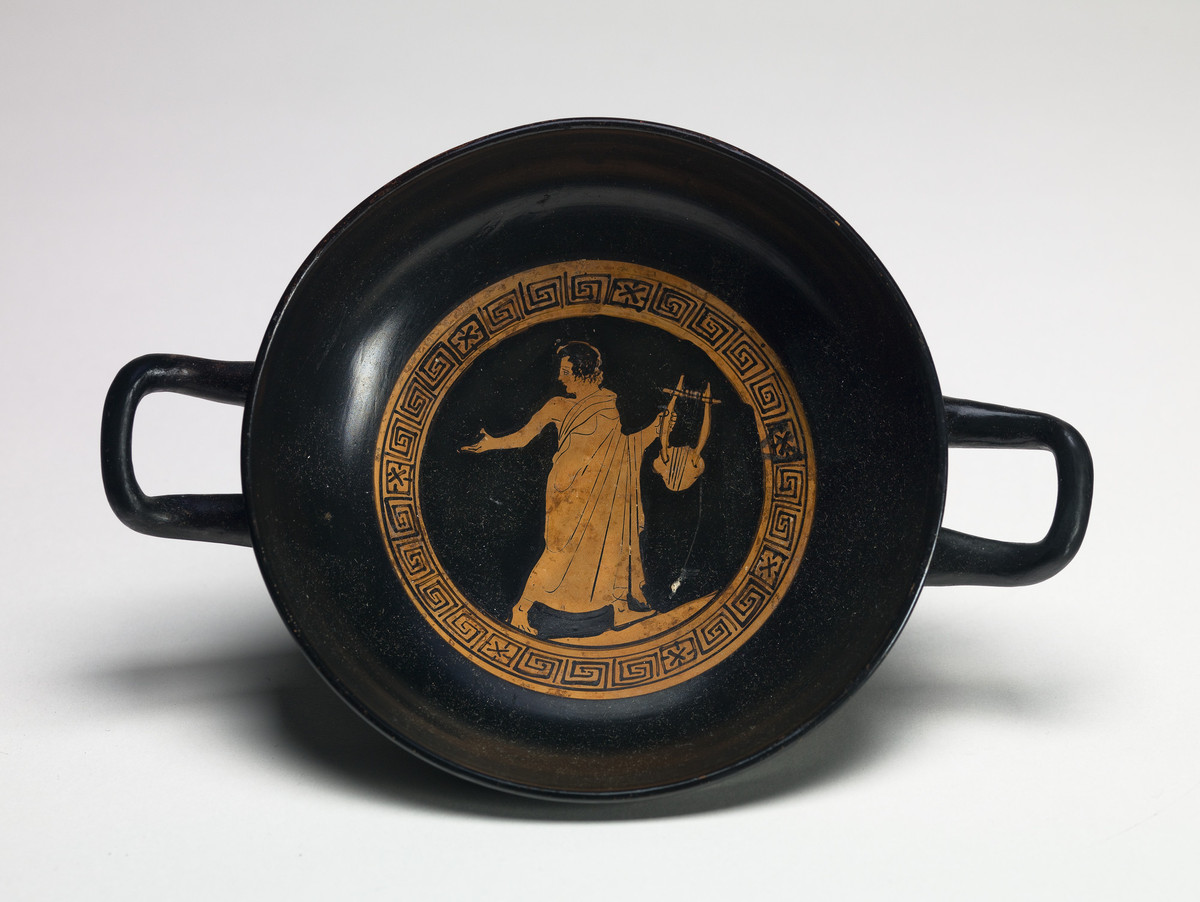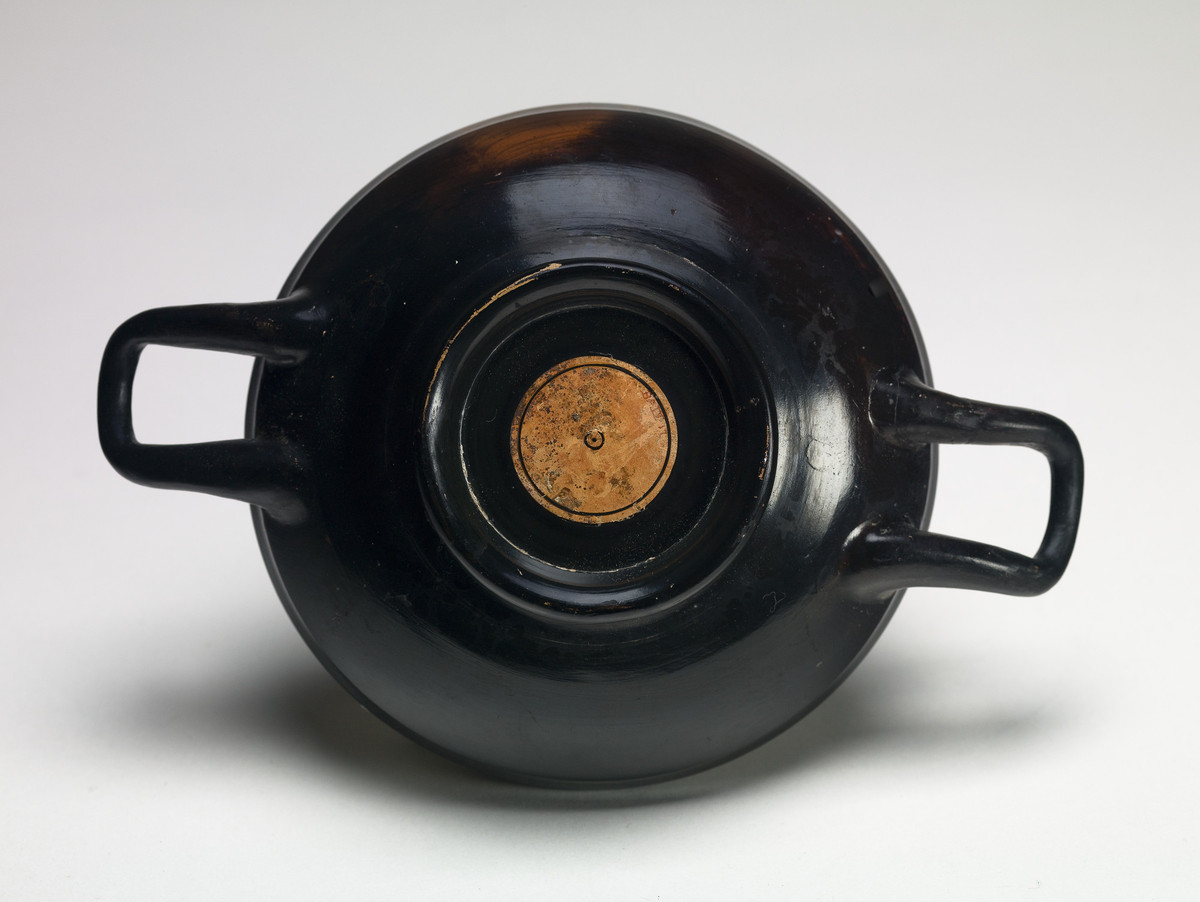On View
Unknown
Greek
Place made: Europe; Greece; Attica
Kylix showing a youth with lyre, Classical Period; ca. 430 BCE
Overall: 2 1/16 in x 9 1/4 in; 5.2 cm x 23.5 cm; Base: 3 1/4 in; 8.3 cm
Purchase with the Nancy Everett Dwight Fund
MH 1943.17.B.AIV

 GIVE
GIVE
